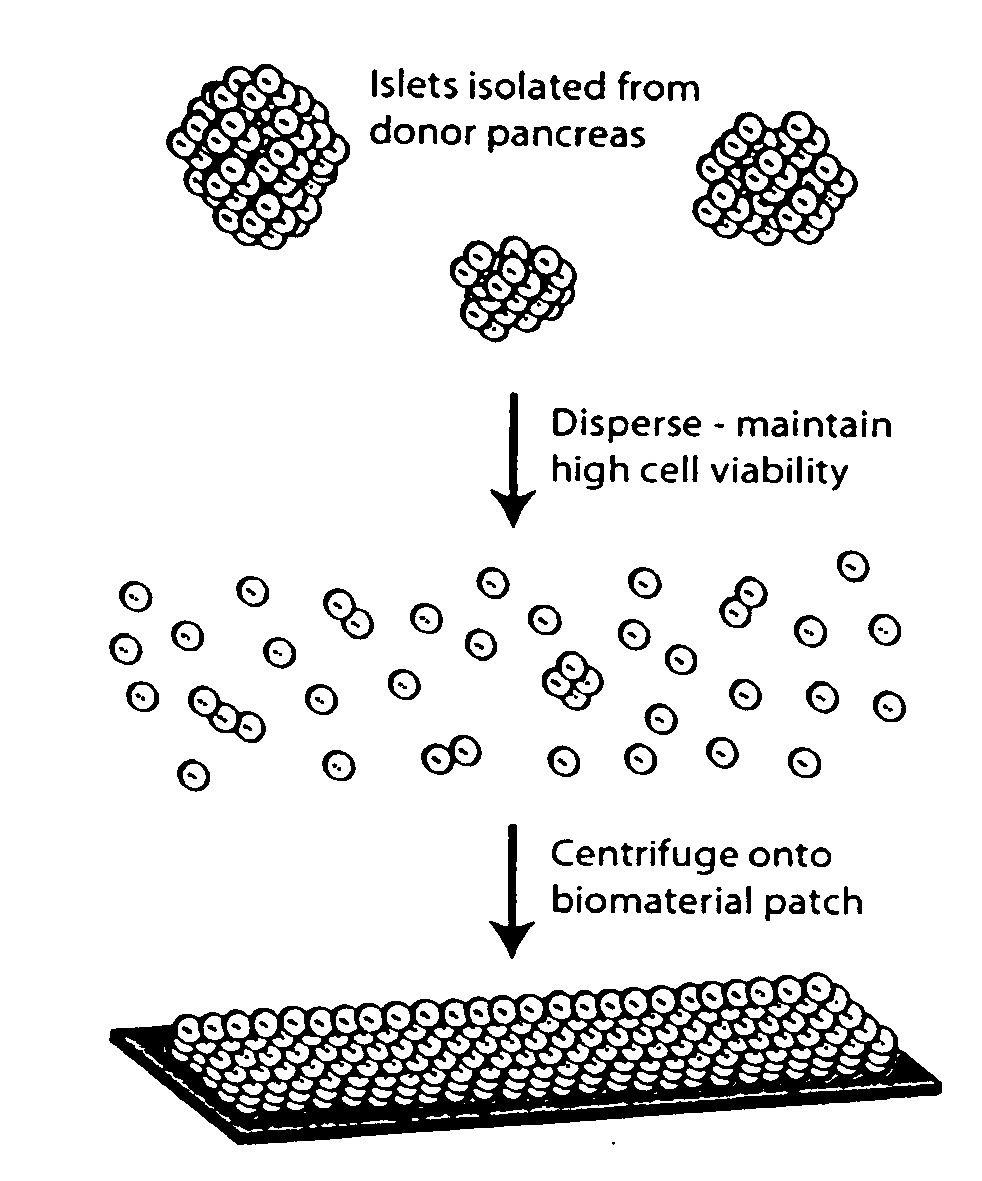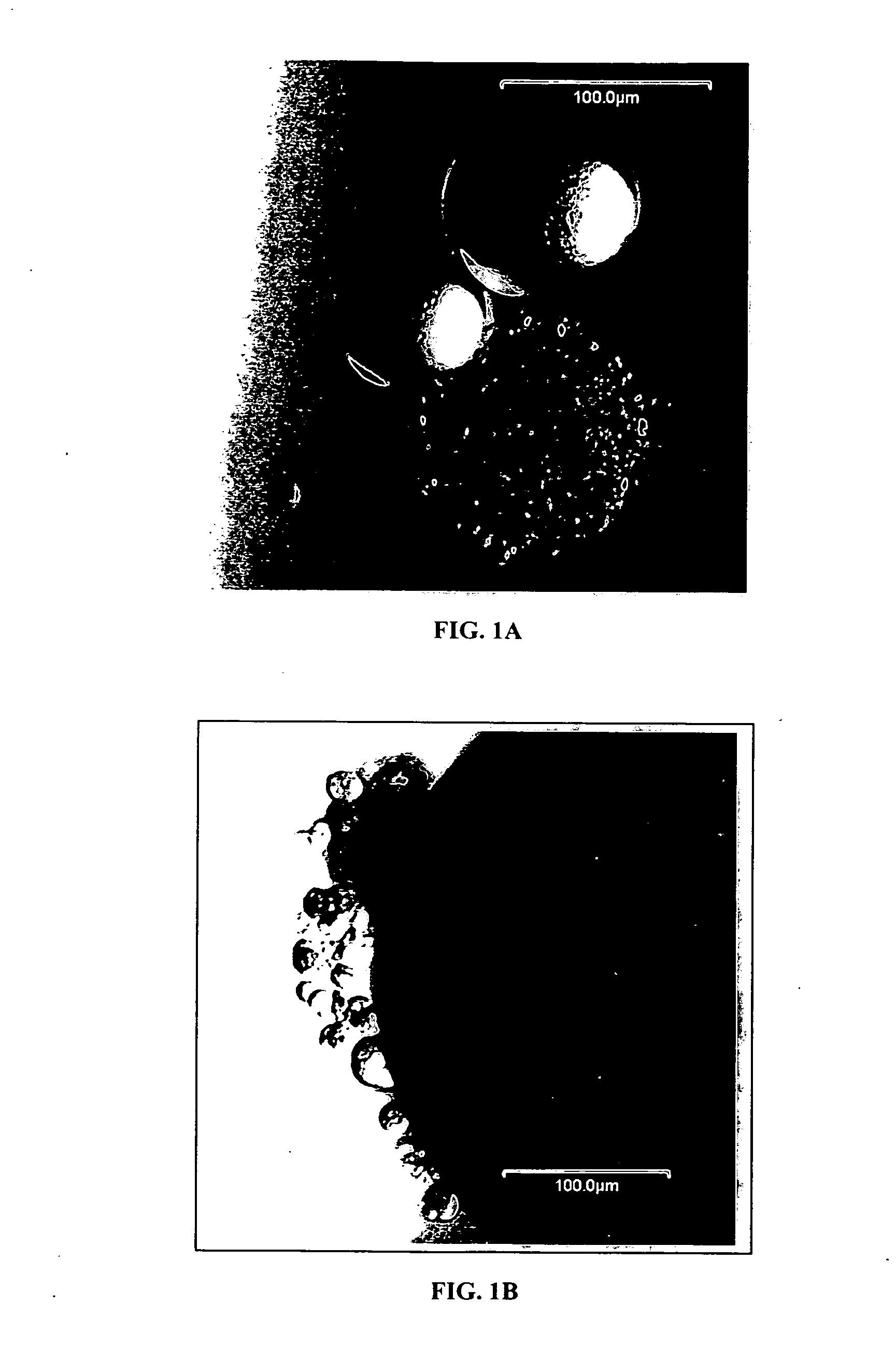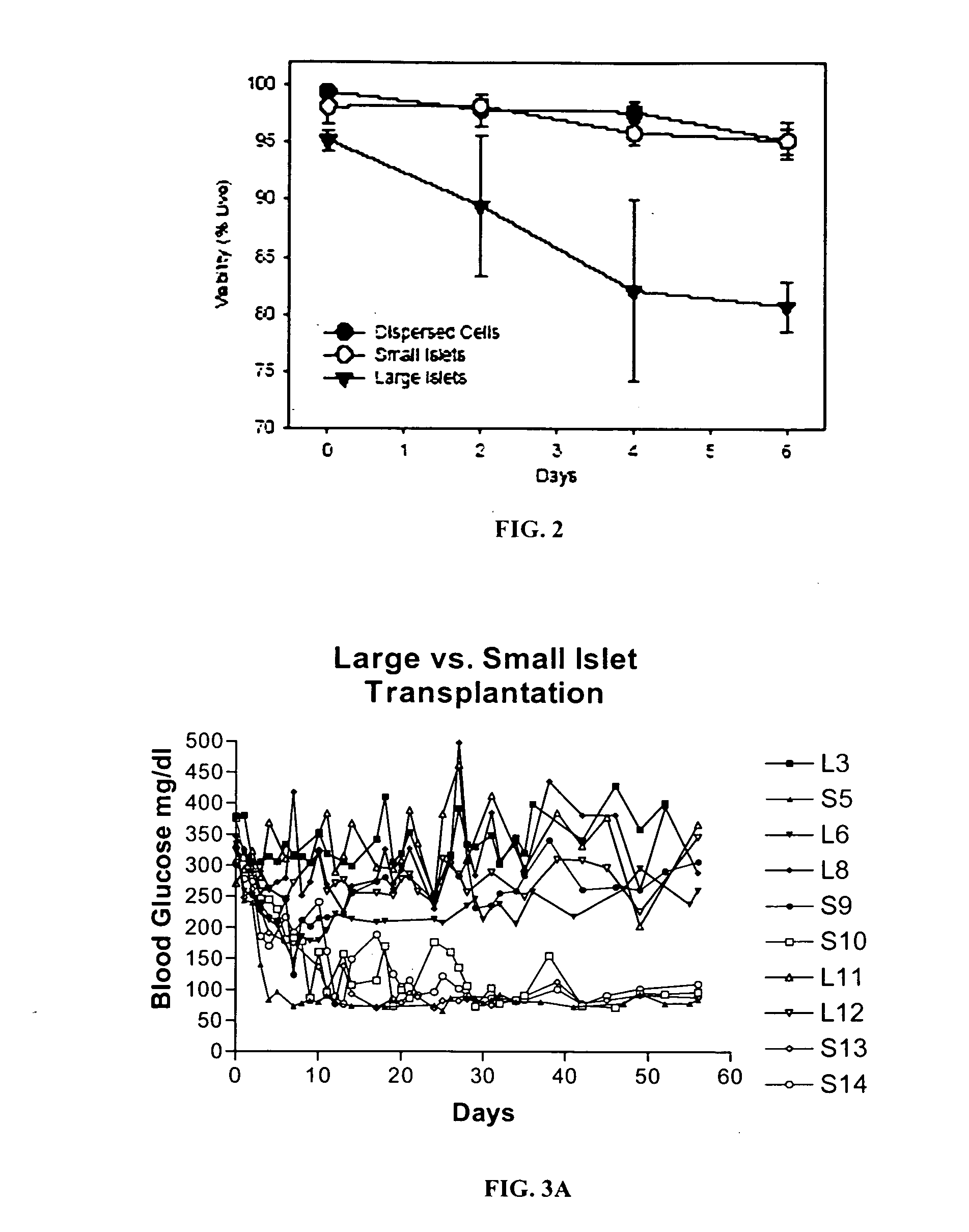Templated islet cells and small islet cell clusters for diabetes treatment
a technology of islet cells and clusters, which is applied in the field of islet cells and small islet cell clusters for diabetes treatment, can solve the problems of limited number of donor organs, obstacles to the use of islet transplantation as a practical treatment for diabetes, and disappointing initial success rates of islet transplantation in humans, so as to facilitate the attachment of individual islet cells and improve the viability of islet cells
- Summary
- Abstract
- Description
- Claims
- Application Information
AI Technical Summary
Benefits of technology
Problems solved by technology
Method used
Image
Examples
example 1
Size of Islet Impacts Viability and Transplantation Success
[0052]This example investigated how islet size affected transplantation success in rats. In this example, techniques for isolating islets are described, and cell viability was measured. Both large islets (greater than 125 microns) and small islets (less than 125 microns) were transplanted in order to assess the effect of islet size on transplantation success. As discussed below, small rat islets are superior to large islets in in vitro function and in in vivo transplantation outcomes. These experiments are also described in MacGregor et al., Small rat islets are superior to large islets in in vitro function and in transplantation outcomes, Am J Physiol Endocrinol Metab. May; 290(5):E771-9 (2006), which is incorporated by reference in its entirety.
[0053]Rat Islet Isolation.
[0054]To isolate large and small islets, adult male DA rats were anesthetized by intraperitoneal injection of a mixture of ketamine and xylazine. The perit...
example 2
Conversion of Large Islets into Individual Islet Cells or Small Islet Cell Clusters
[0068]This example illustrates methods for fragmenting or dispersing intact islets into a small islet cell clusters (such as the cluster shown in FIG. 5) and individual islet cells. The small islet cell cluster in FIG. 6(A) was created using a conventional enzymatic digestion, while the small islet cell cluster in FIG. 6(B) was formed with graded calcium depletion. As the image in FIG. 6(A) illustrates, enzymatic dispersion breaks the islet down into small islet cell clusters, but it does not “open” the cluster up so the cells on the interior of the cluster have a diffusional barrier that is several cells thick. In contrast, for small islet cell clusters formed using calcium depletion (FIG. 6(B)), the cluster has an “open” morphology such that there is a smaller diffusional barrier for each cell of the when the small islet cell cluster. It is anticipated that a combination of enzymatic digestion and c...
example 3
Preparation of Individual Islet Cells and Small Islet Clusters onto a Patch Biomaterial Scaffold
[0083]The foregoing examples indicate that small islet cell clusters and even individual beta cells should represent the highest achievable free surface area for transporting oxygen, glucose, etc. Thus, in this example, individual islet cells or small islet cell clusters were templated onto a biomaterial scaffold material, such as a patch as generally shown in FIG. 7, to form a multilayer of islet cells.
[0084]Screening of Scaffold Materials
[0085]In this example, optimization of various biomaterials useful for preparing the scaffolds of the present invention were investigated by measuring the relative adhesion of the islet cells to the biomaterial. It is preferable that the scaffold material be easy to handle without dissociating the tissue and biomaterial backing to enable facile implantation. Table 1 illustrates a wide variety of biomaterials which were selected for interactions with bet...
PUM
| Property | Measurement | Unit |
|---|---|---|
| thick | aaaaa | aaaaa |
| diameter | aaaaa | aaaaa |
| diameter | aaaaa | aaaaa |
Abstract
Description
Claims
Application Information
 Login to View More
Login to View More - R&D
- Intellectual Property
- Life Sciences
- Materials
- Tech Scout
- Unparalleled Data Quality
- Higher Quality Content
- 60% Fewer Hallucinations
Browse by: Latest US Patents, China's latest patents, Technical Efficacy Thesaurus, Application Domain, Technology Topic, Popular Technical Reports.
© 2025 PatSnap. All rights reserved.Legal|Privacy policy|Modern Slavery Act Transparency Statement|Sitemap|About US| Contact US: help@patsnap.com



